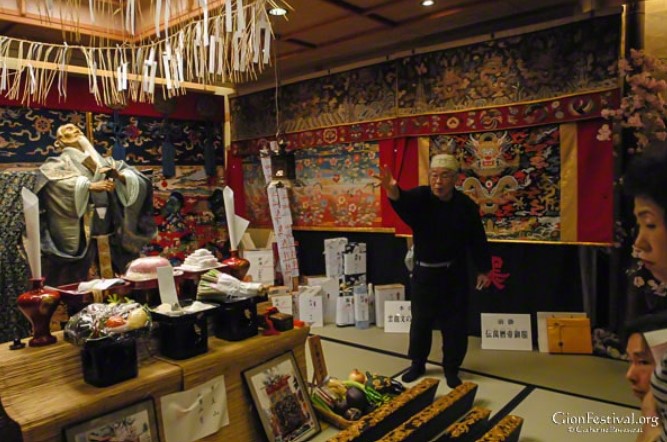The Gion Festival, Kyoto's renowned summer celebration, features a variety of floats, with Kuronushi Yama standing out during the Ato Matsuri procession on July 24. This float honors Ōtomo no Kuronushi, a distinguished poet from the Heian period and one of the esteemed "Rokkasen," or Six Immortal Poets.

Kuronushi Yama is a compact "kakiyama" float, notable for its depiction of Kuronushi beneath a cherry tree, symbolizing the transient beauty of life—a theme prevalent in Japanese poetry and art. This imagery draws inspiration from the Noh play "Shiga," where Kuronushi admires cherry blossoms, reflecting the deep connection between nature and literature in Japanese culture.
The float's design showcases Kyoto's exquisite craftsmanship, featuring intricate woodwork and traditional textiles. A prominent pine tree extends skyward from the float, symbolizing longevity and resilience. Interestingly, prior to the 15th-century Ōnin War, Kuronushi Yama was known as Saigyō Yama, named after Saigyō Hōshi, a 12th-century samurai-turned-monk and poet, highlighting the float's rich historical evolution.
Participating in the Ato Matsuri, Kuronushi Yama contributes to the festival's vibrant tapestry of history, art, and community spirit. The Gion Festival, with origins dating back to 869 C.E., began as a purification ritual to ward off plagues and has since evolved into a month-long celebration featuring grand processions, traditional music, and communal festivities.
Experiencing Kuronushi Yama during the Gion Festival offers a unique glimpse into Japan's poetic heritage and the enduring cultural traditions that continue to thrive in Kyoto today.
Read More: www.gionfestival.org/yamaboko-floats/ato-matsuri/kuronushi-yama
Comments
Post a Comment